|
At the completion of their experiment to determine which material absorbed the most water, second graders needed to interpret the data. Data tell a story and can inform a design solution. Second graders constructed graphs and then had to use the data to provide evidence for which material would be the best to use in a bib and which would be the worst. Second graders are truly working on the science and engineering practices of analyzing and interpreting data and arguing from evidence! Way to go second grade! After completing their experiment to see which material could absorb the most liquid, second graders shared their results together as a class. They started to see that the data was not consistent. What does this mean, especially if we all used water and the same materials?
Second graders had an in-depth discussion about what would possibly have given such differing results. Here's what they came up with: 1. We all didn't start with the same amount of water in our graduated cylinders. We probably should have. 2. Some groups "double dipped" with their material, causing it to absorb more water than it actually could. 3. Some groups squeezed out the water back into the testing cup, releasing water that it really absorbed. We all agreed to do the experiment again, so that we can hopefully control all those variables and get more reliable data to inform our engineering solution (to design a baby's bib). Keep up the great work second grade!
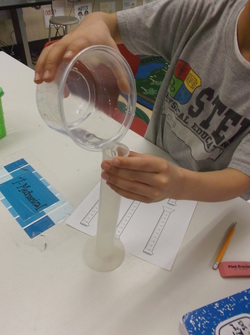 Before second graders use liquids to solve an engineering design challenge, it's important that they know how to measure them. Using a graduated cylinder, second graders are finding the volume of liquids by measuring in milliliters (mL). It is important to get at eye-level when measuring liquids because they can create a curve (meniscus). We measure the volume of a liquid from the base of the meniscus to get an accurate measure. We'll be pouring, measuring, and recording the volume of water. Way to go second grade! 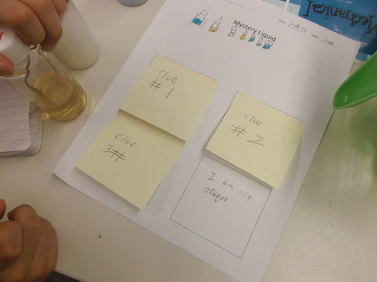 With all of their testing completed, second graders are putting all their data to good use! They're communicating to their friends about different mystery liquids. Each clue about a liquid reveals one property of it. For example... "I don't flow quickly!" reveals that the mystery liquid is viscous. "I am not opaque" tells us that the mystery liquid also doesn't let light through it. Awesome thinking and working second grade!
Now that second graders have completed many tests on both solids and liquids, they are filled with confidence to design their own investigations to determine new properties of liquids! Check out the work of three different student groups who noticed new properties of different liquids. These three groups want to complete a "Bubble Test," a "Fast and Slow Test," and a "Sticky Test!" Awesome job designing your own investigations second grade!
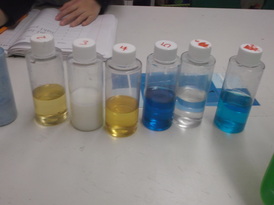 Now that second graders have officially defined a solid and examined the many different types of properties solids can have, we've ventured on to liquids! What makes a liquid a liquid? Well, it takes the shape of its container, of course. Oh! And it's wet! Second graders are investigating seven different mystery liquids. Knowing what they liquids are is NOT important, but understanding that their properties are unique just like solids are is the key! Their first two tests involve identifying the liquids' colors and their ability to transmit light through them (opaque/translucent/transparent). They'll be creating their own tests soon to determine NEW properties of liquids. How cool! 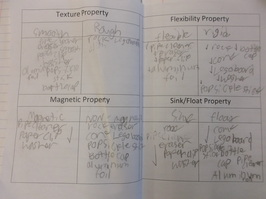 Using data is an important part of an engineer's work. Second graders are organizing their data so that it is easier to see how each object they tested compares with all the others. Can you figure out which object I am talking about? Which object floats and is flexible? It can't be the lego board, because even though it floats on top of the water, it doesn't bend, which means it's rigid. It must be the pipe cleaner, because it floats on the water and it bends, meaning its flexible! |
Mrs. BrinzaQ: What would a polar bear telephone operator say? Archives
June 2015
Categories |
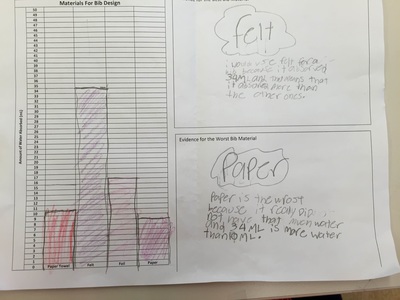
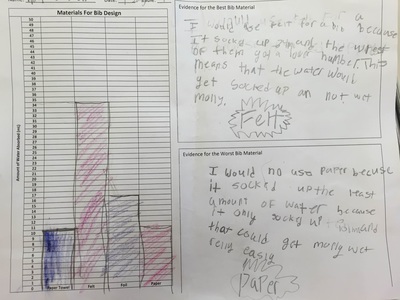
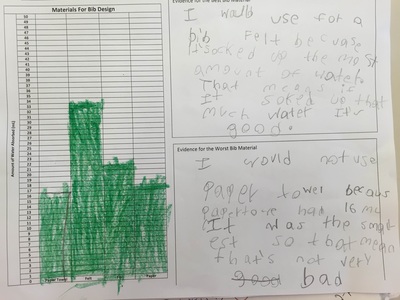
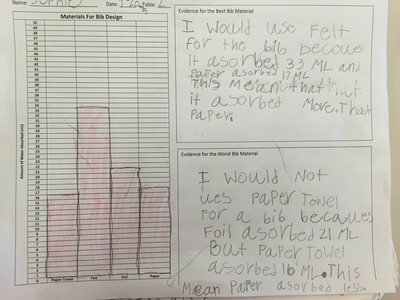
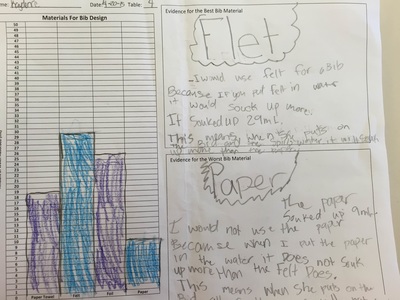
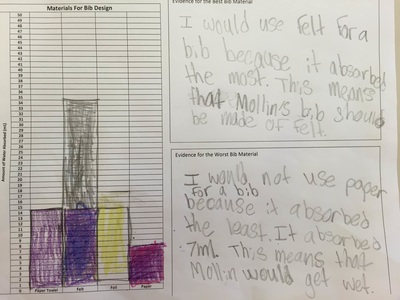
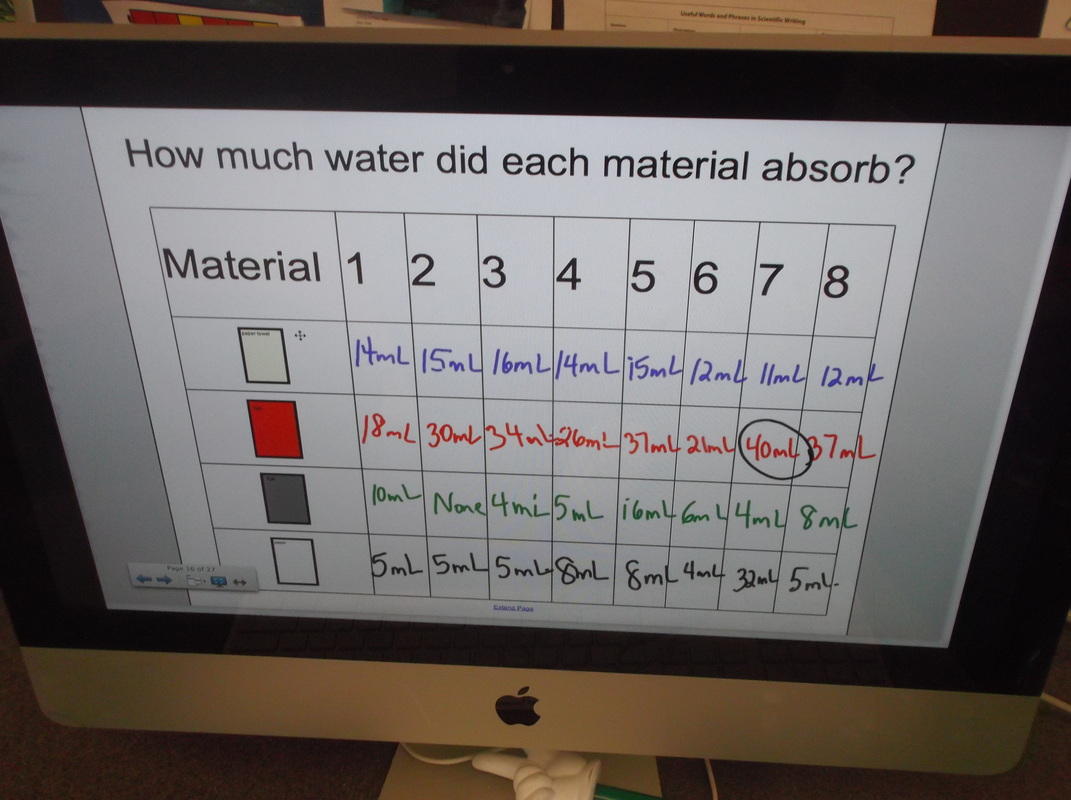
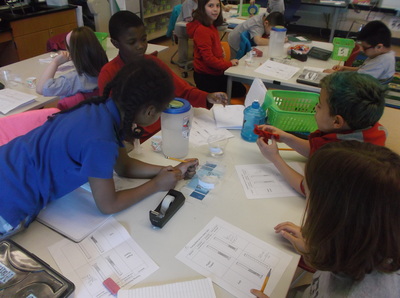
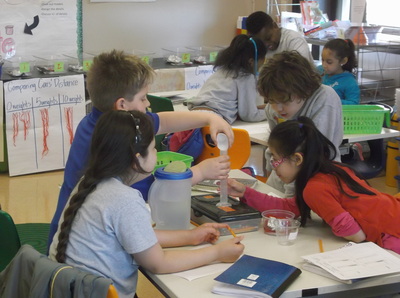
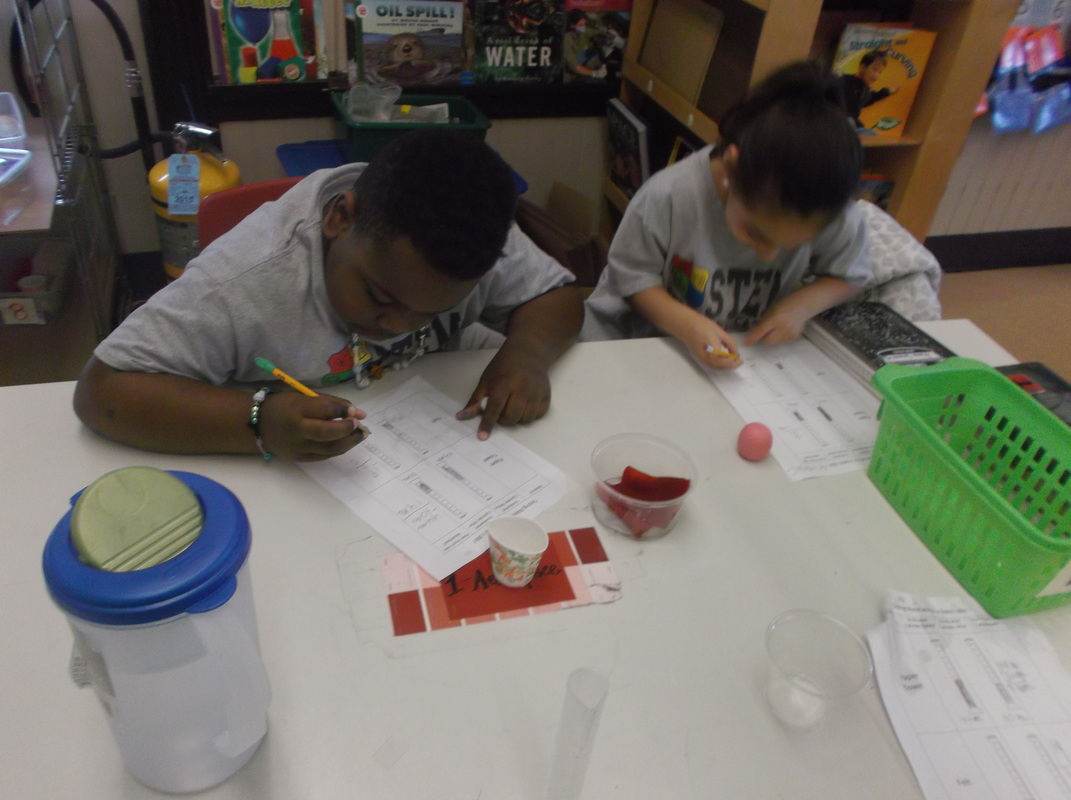
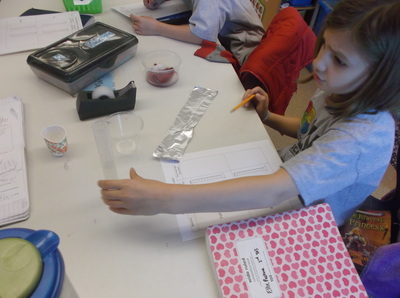
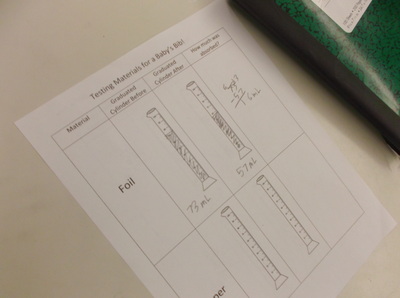
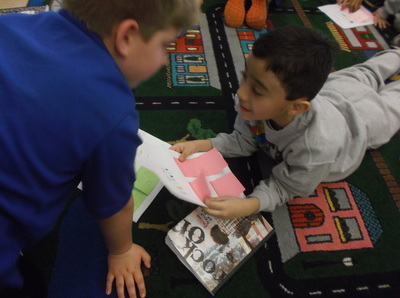
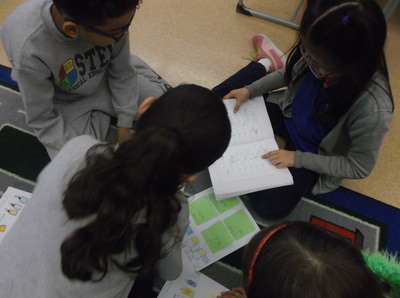
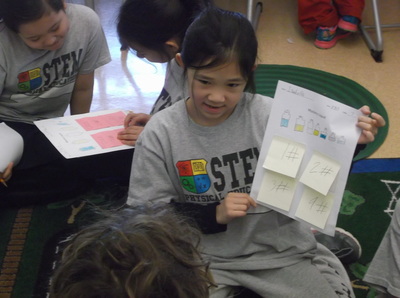
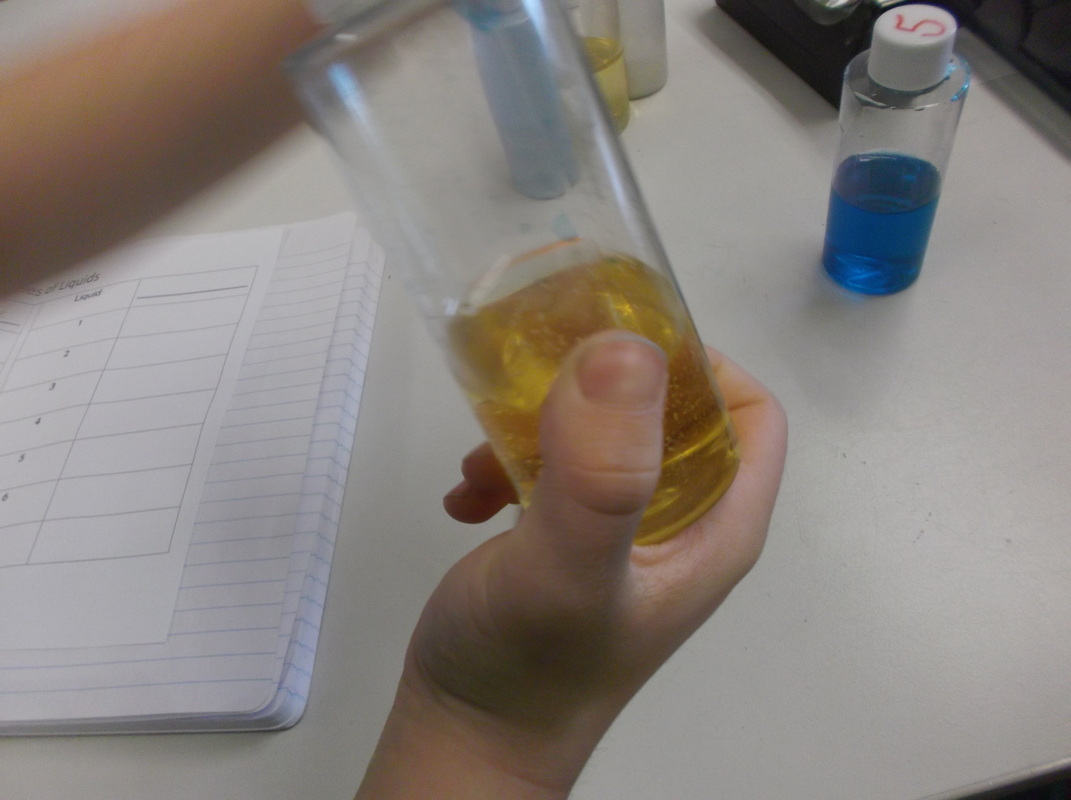
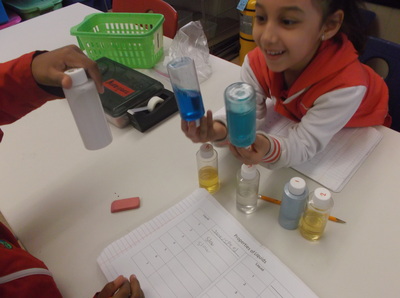
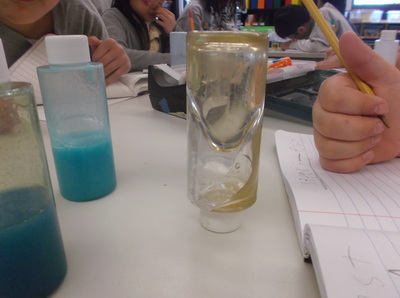
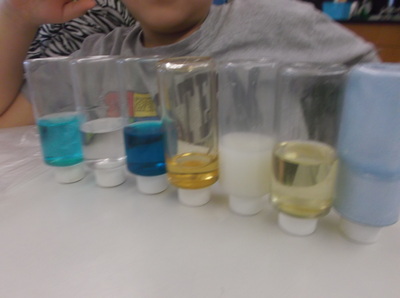
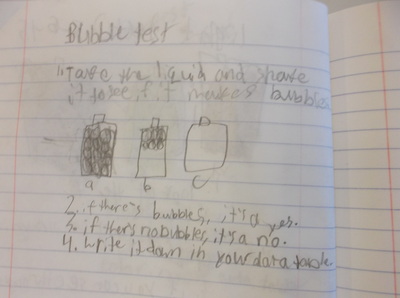
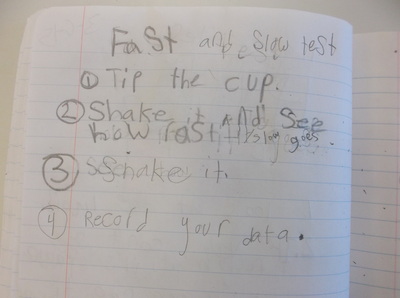
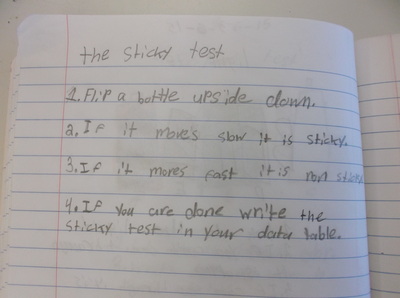
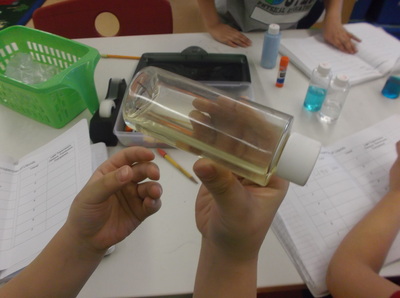
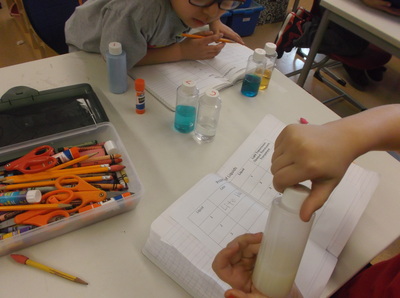
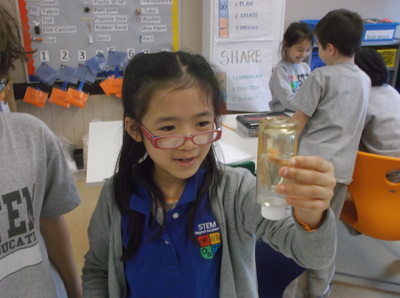
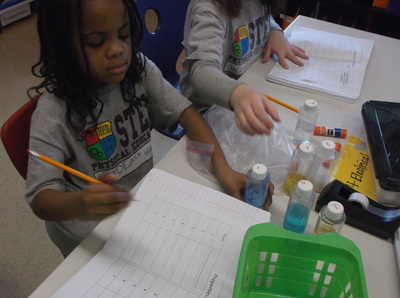
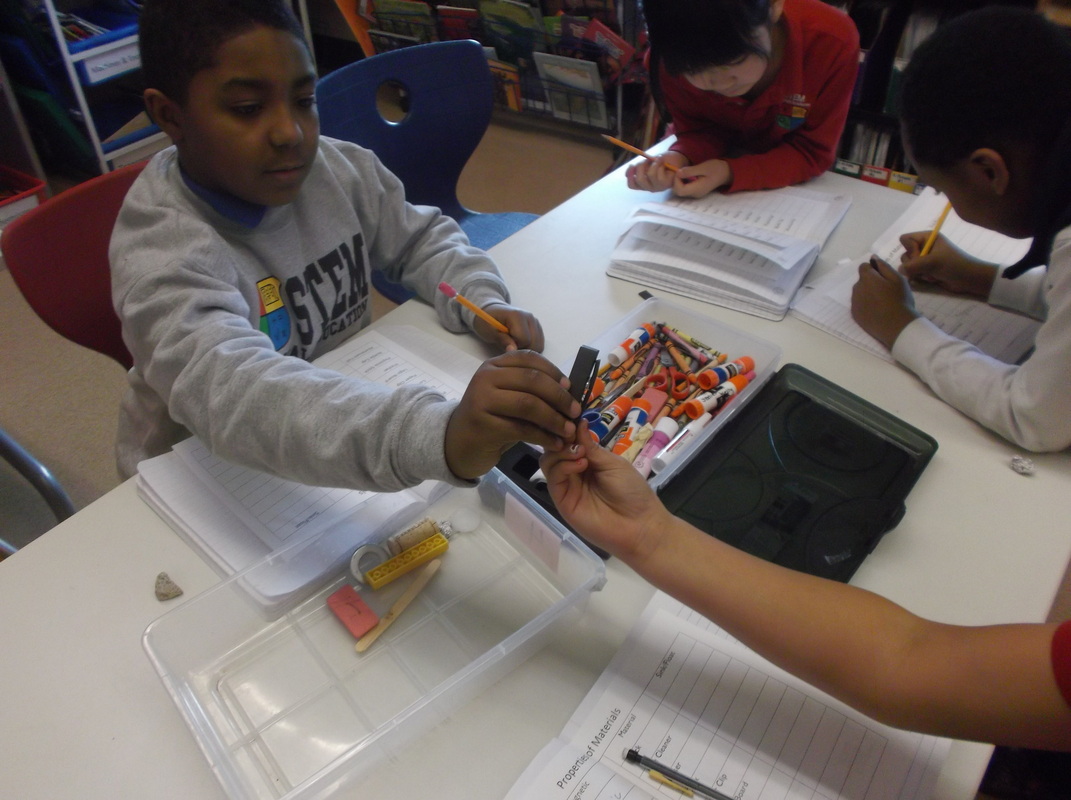
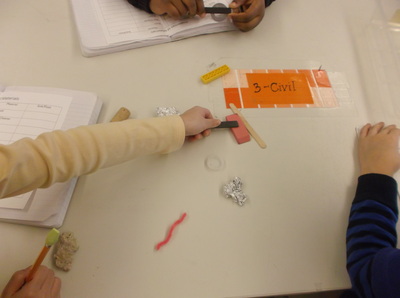
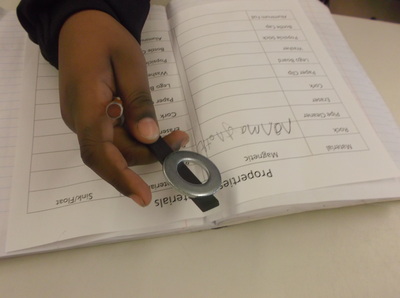
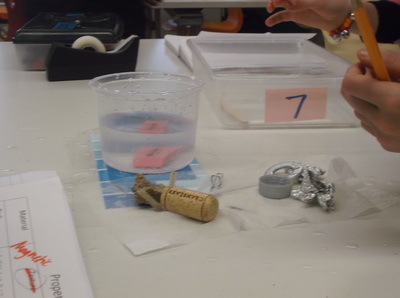
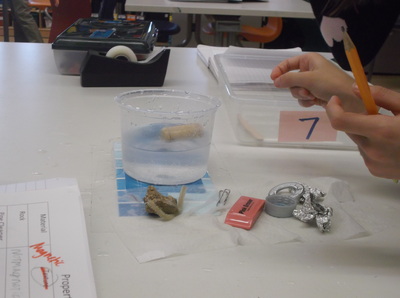
 RSS Feed
RSS Feed